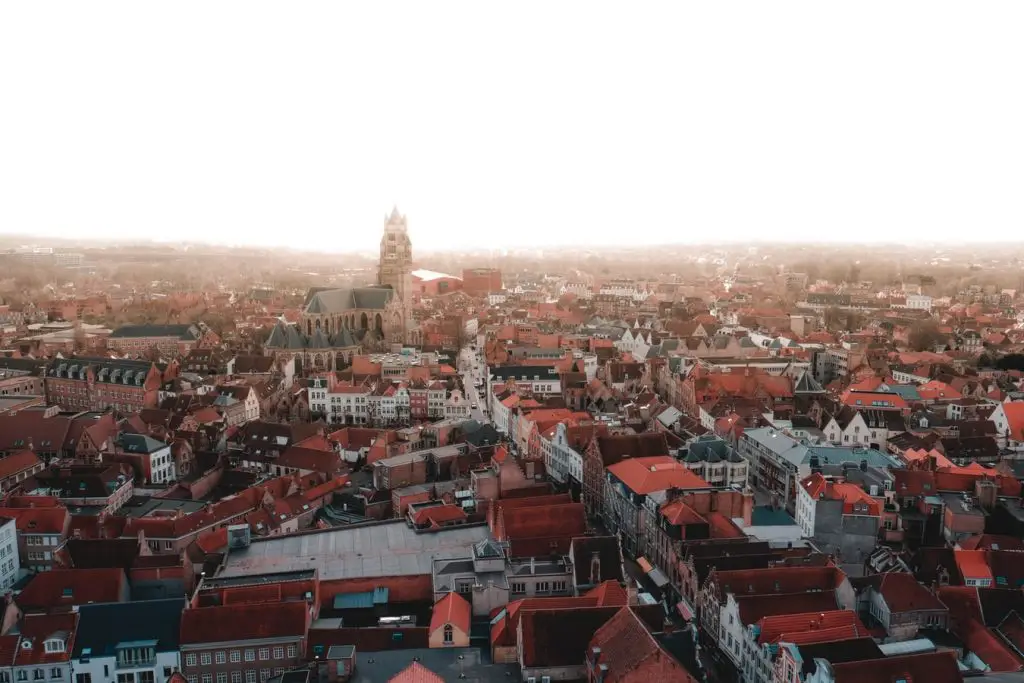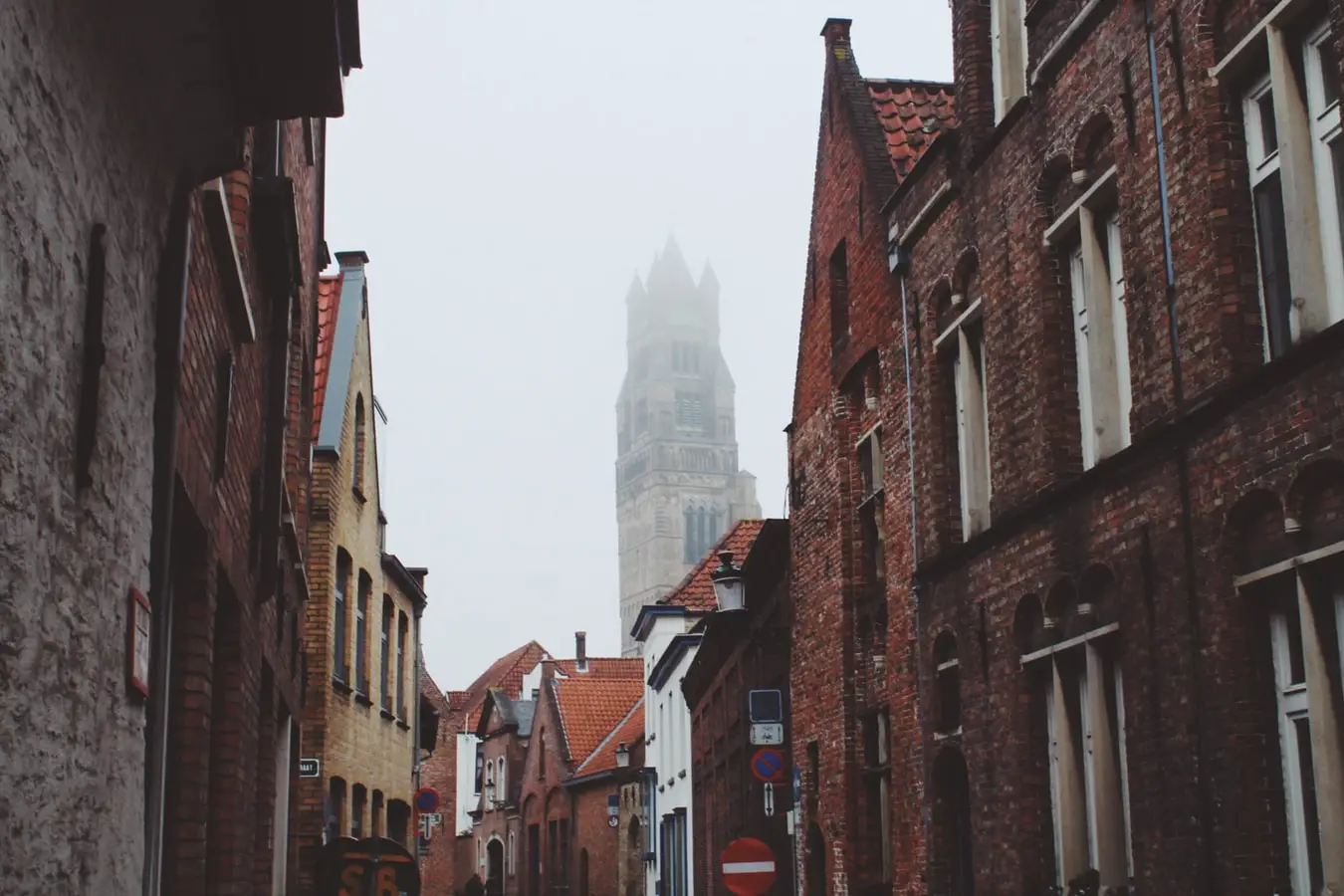Expert travel storyteller Jordan Adkins, founder of InspiredByMaps.com, brings a decade of adventures across 101 countries and 450+ UNESCO sites into rich, off-the-beaten-path narratives, melding ecological expertise with genuine, seasoned travel insights. His full bio can be found here.
Bruges is an enchanting destination that’s unparalleled among the historic cities of Europe. The entirety of the city center is a UNESCO World Heritage site, with most of the medieval architecture remaining intact.
There are countless landmarks and cultural institutions, this Belgian city has been a player in the frontlines of Europe’s history for a millennium.
The city lies in the Flemish region of Belgium – the iconic poem ‘In Flanders Fields’ harkens to the region. Along with some other canal-based cities, it’s earned the nickname ‘Venice of the North’, home to the only sculpture by Michelangelo to leave Italy during his lifetime.
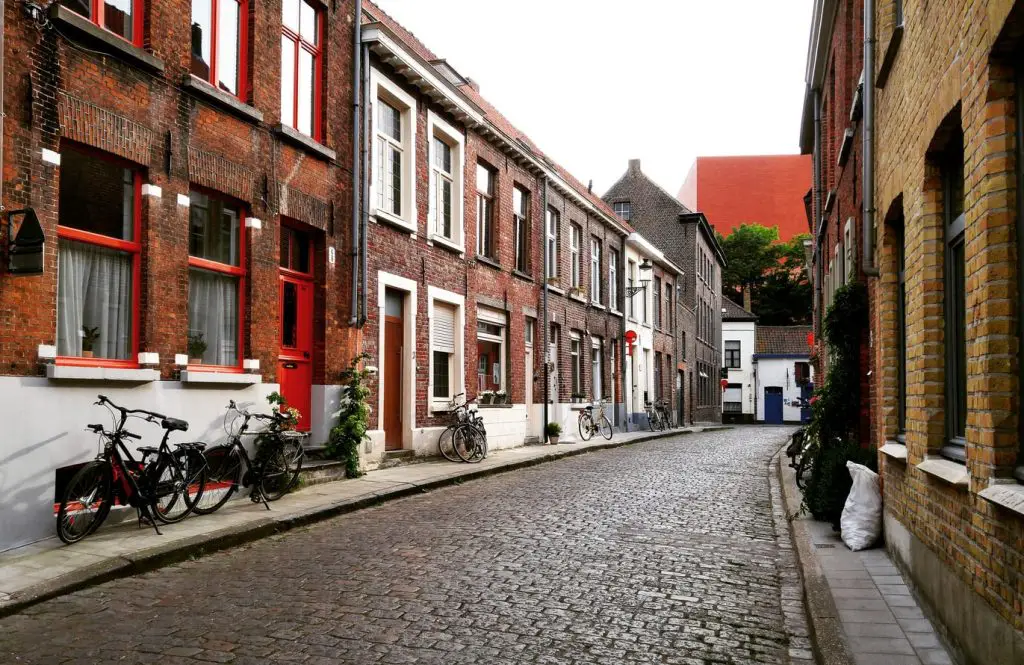
What To Do In One Day In Bruges | The Ultimate 24 Hour Guide!
Page Contents
History And Character Of Bruges
The history of Bruges begins in a way that follows many other Western European cities. It saw scattered human activity through the Bronze and Iron ages, eventually colonized and fortified by the Romans.
It quickly gained the status of a regional capital, a title it would maintain for nearly 1000 years. The city saw slow expansion until the ‘Golden Age’ of Bruges from the 12th to 15th centuries.
Bruges was in an ideal location to facilitate trade between the nearby cities and factions. They adopted an Italian approach to mercantilism and incorporated systems of credit while welcoming merchants from around the world to do business. Bruges established itself as a significant port city, one of the major seaside nodes in Europe. The Bourse was established in 1309, arguably the first stock exchange in the world.
Starting in the 16th century, the Zwin channel that connected Bruges to the sea was naturally silted and sealed, ending the Golden Era. Nearby Antwerp soon took over as the seat of the region, while Bruges became known almost entirely for their lace industry. By the year 1900, the city was impoverished with a population of only 50 000 people.
The last 100 years has been characterized by an orientation towards tourism. The medieval architecture was spared during both world wars, despite German occupation during both. It would eventually see a new ‘Renaissance’, becoming the European Capital of Culture in 2002. The port of Zeebrugge (‘Sea Bruges’) contributed to this rise, bringing economic prosperity as one of Europe’s most important and modern ports.
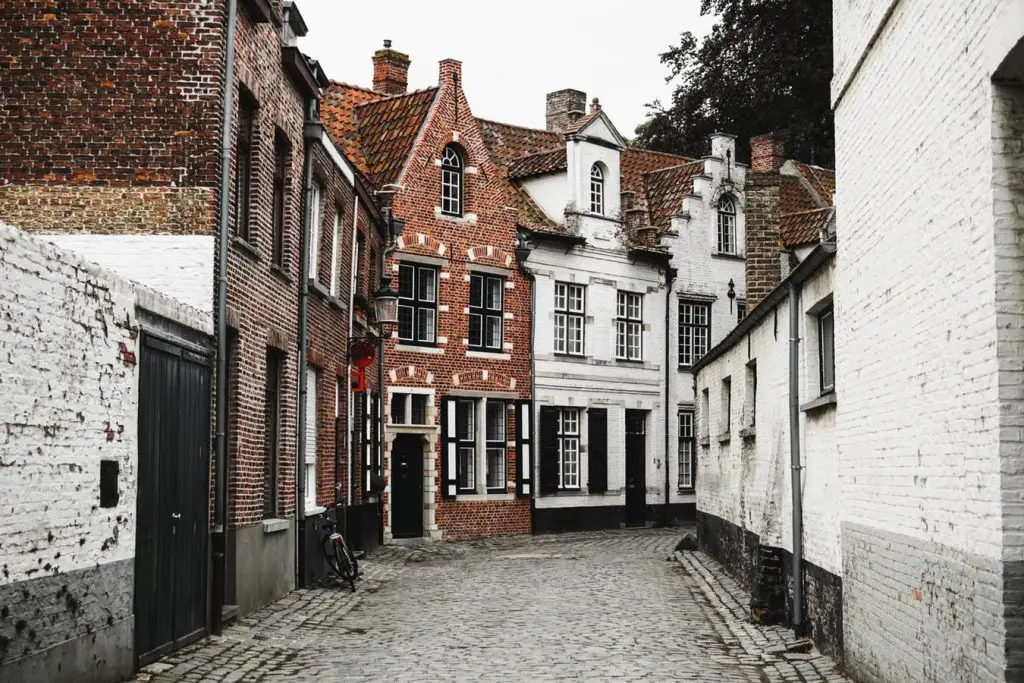
Geography And Climate
Bruges is on the coast of the North Sea, near its southern-most point where it joins the English Channel. The port of Zeebrugge, to the north of the city proper, provides direct access to the Atlantic Ocean through the Sea. The historic city of Bruges is more than 10 kilometers from the coast, connected by water via the massive Boudewijnkanaal (Baudouin Canal).
The city is conveniently located for travel: the Dutch border is only 30 minutes away, French seaside towns are an hour by car, Brussels is only an hour away by train. The entire region is flat, typifying the ‘lowlands’ moniker of the area; local transport by bicycle or on foot is popular.
The weather is typical of an oceanic climate. Summers are warm, with a usually a few hot weeks. Winters are mild, with a few cold days; the temperature rarely dips below freezing for long. Snow is rare and hardly ever accumulates; most of the precipitation falls in the latter half of the year (July-Dec).
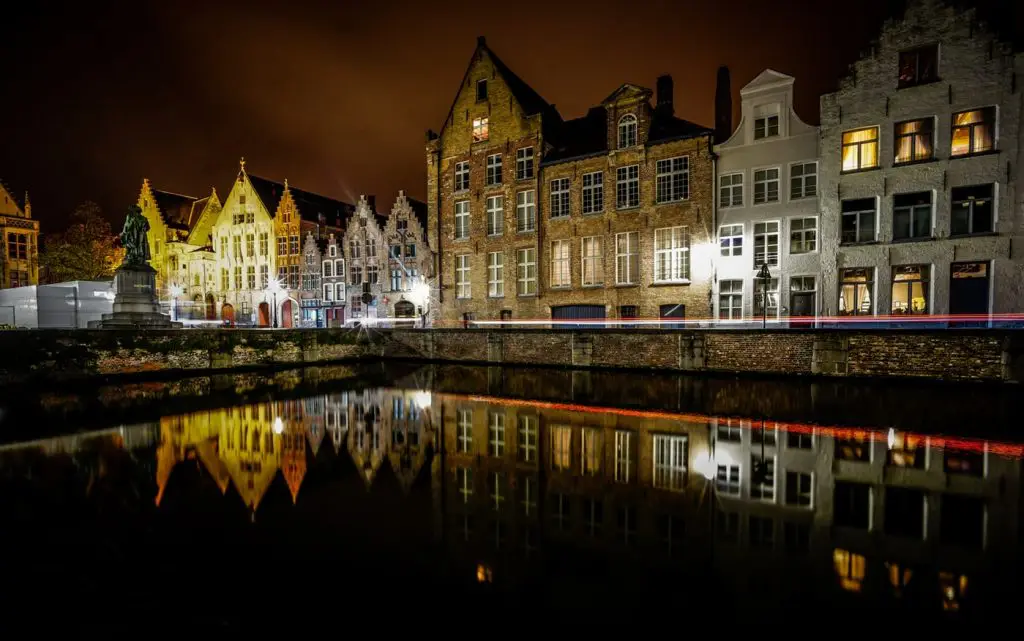
Atmosphere And Approach
The municipality of Bruges is divided into 11 neighbourhoods, centered around the medieval city. The UNESCO site is roughly oval in shape, bordered by canals and accessible via four ancient gates. A circular motorway wraps around the city, providing access to and from the surrounding neighbourhoods. A vast green belt occupies the area just inside the moat-like outer canal.
Almost everything worth seeing in Bruges lies within the city’s gates – only four remain of the original seven – historic protectors of the town. This area is only a little over four square kilometers, sparsely populated with about 20 000 residents, but often packed with tourists. Modern buildings are rare, the vast majority of the architecture remains from the medieval period. Even restaurants like McDonalds are hidden behind facades that suit the area.
Because of this, a day in Bruges is best spent wandering; around every corner lies another breathtaking sight worth seeing. The cobbled streets are lined by the gable-roofed houses that typify the canal-based, merchant cities in the region (See Amsterdam). For the size of the city, it boasts an impressive amount of greenspace and parks, each with idyllic setting and views.
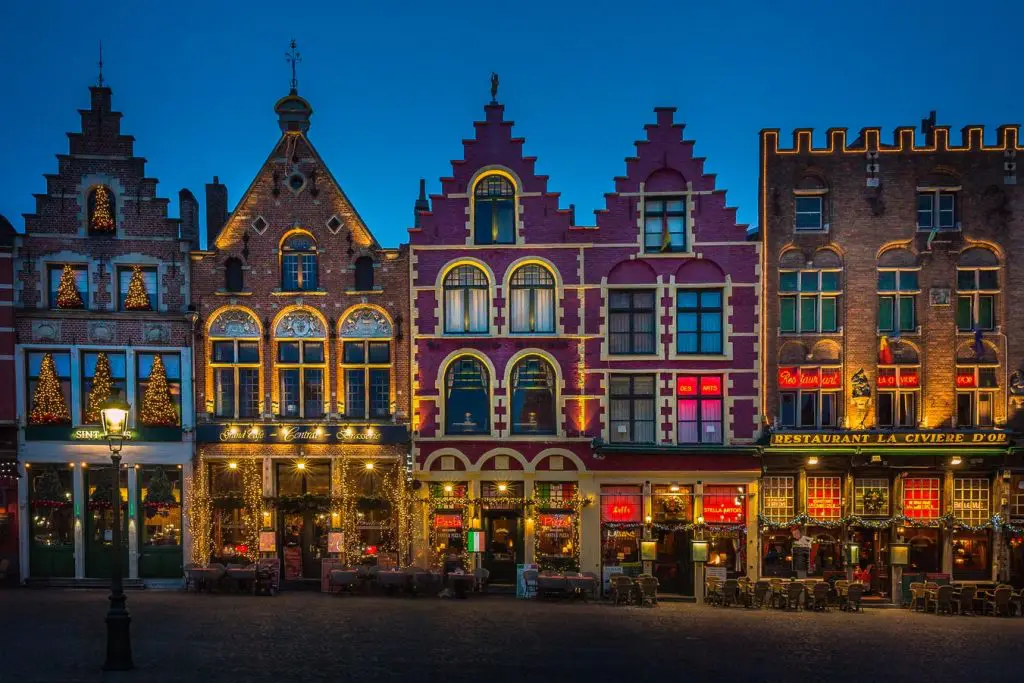
Culinary Attractions Of Bruges
Bruges is known for three things: Chocolate, Beer and Fries. Outside of Switzerland, the chocolatiers are considered some of the best in the world; the history of beer in the city is unparalleled, with pipelines running under the streets; Fries were invented in Belgium and brought to perfection in Bruges. Each has their own dedicated museum in the city if you’re an aficionado.
- Chocolate: There is a spectrum of quality throughout the city, generally divided into three types of purveyor. The street stalls and off-brand sweet shops are considered the lowest quality, however they still rival the best from North America. Branded shops like Godiva, Galler and Leonidas offer the best bang for their buck. Some of the best chocolate in the world can be sourced from only 10 premium, traditional shops in the city; find a few on Wollestraat (Van Oost, Pralinette).
- Beer: After the Germans, the Belgians definitely know how to bring the best out of this historic beverage. A local brewery, Brugse Zot, has to bottle their beer outside the city due to size constraints; some lucky local bars have their draught supplied via pipelines directly from the source.
- Fries: It’s best not to call them ‘French Fries’ while in Belgium, a sore-spot that’s been spawned from the French spoken in the southern half of the country (Wallonia). In most cases, the potatoes are fried in an animal fat – mind boggling flavour but definitely not light on the saturated fat.
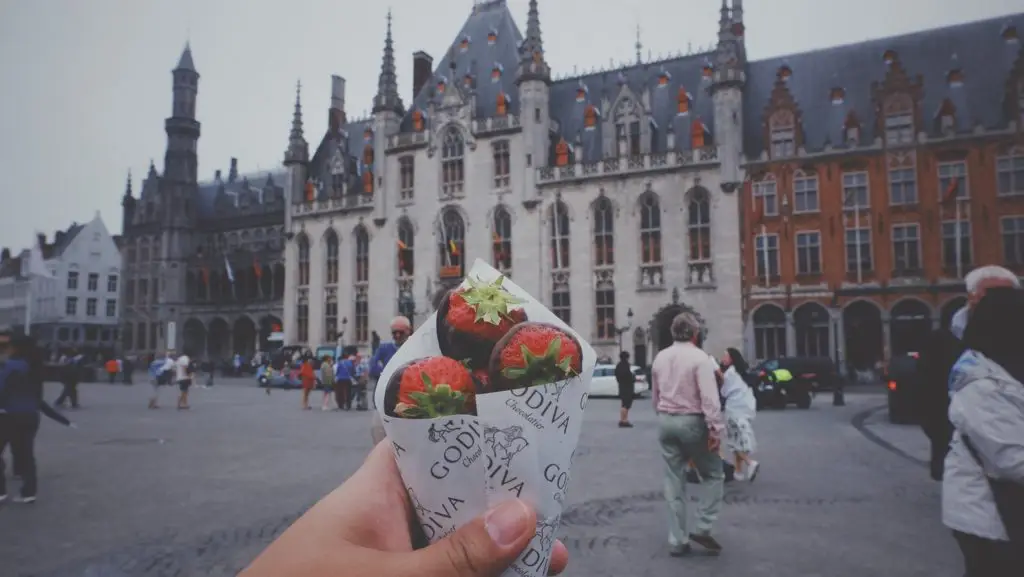
Bruges In A Day
If you only have an hour or two in Bruges, go to the Markt (Market) square. Here you’ll see the towering Belfry, countless shops, and some of the storied buildings of Bruges.
- Stadhuis (City Hall): Consider starting your tour of Bruges at the heart of government on the Burg (Keep or Fortification) Square. The extravagant and stately building, dating from 1421, is open to the public as a museum; even wedding ceremonies can be planned in the magnificent halls.
- Basilica of the Holy Blood: This Romanesque and Gothic chapel dates from the 12th century. It houses the Relic of the Holy Blood, retrieved during the 2nd Crusade. It is paraded every year through the streets, along a mile-long procession; over 1000 residents take part, dressed in period dress or as knights/crusaders. The dark and solemn ambience of the building is transformative, even atheists may feel a tinge of something. It is also one of the most famous landmarks in Belgium!
- Belfort (Belfry): Built in the 13th century, it is one of the three iconic towers of Bruges. It served as a watch tower for fires and calamities around the city, it retains this stature as one of the best views in the city. For a small fee, you can climb the 366 steps to the top, towering 83 meters over the Markt. It houses 47 bells and employs a full-time carilloneur or bell-ringer; they provide free concerts throughout the day. You might even recognize it from one of the most famous films ever made in Belgium…
Just outside the Belfry, you’ll find some local institutions. The Markt square boasts some of the best bakeries and cafes in the city; however, the real show may lie in the simple shacks off to the side.
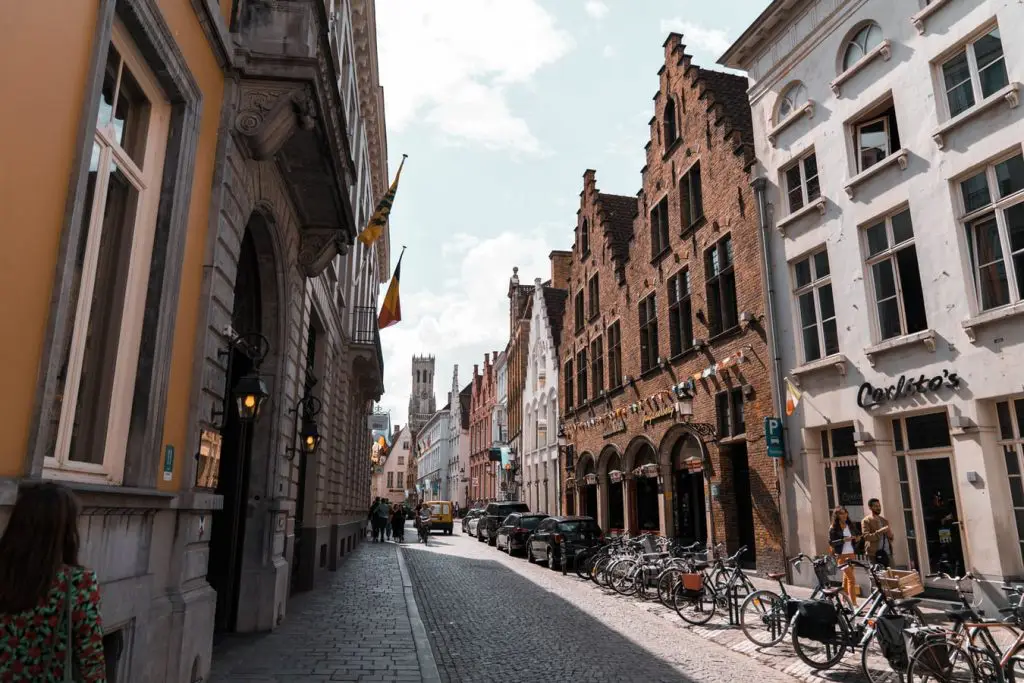
- Belfry Street Stalls: Arguably the best fries in the city, maybe the best in the world. These modest stalls recently celebrated their 100th birthday, setting up shop at the end of WWI (1917). Sitting at the base of the Belfry, these authentic shops serve thousands per day, a certified Belgian institution.
- Brouwerij de Halve Moon (Half Moon Brewery): Half brewery, half museum, this is a celebration of Brugse Zot, the local highlight. The terrace provides an incredible view of the city, with access to the best beer in town.
Just down the street from the Halve Moon lies one of the most iconic locations in Bruges, the OLV.
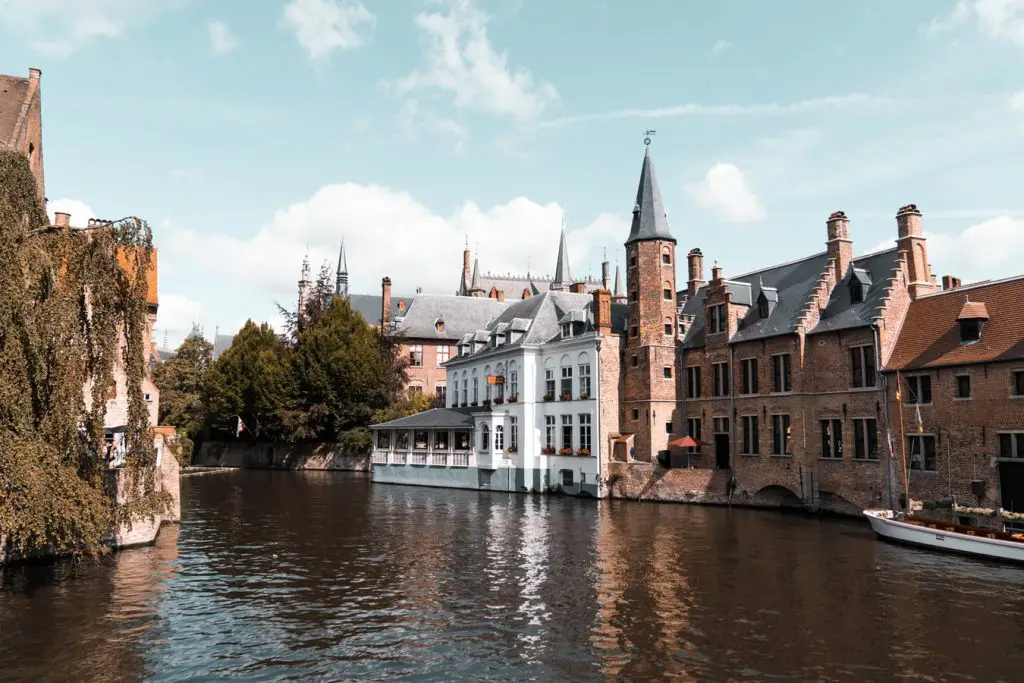
- Onze-Lieve-Vrouwekerk (OLV) (Church of Our Lady): The second iconic tower of Bruges, standing at 115 meters; it remains one of the tallest brickwork structures in the world. The sculpture by Michelangelo, Madonna and Child, was purchased and delivered in 1514, the only sculpture from the artist to leave Italy during his lifetime.
- Groeningemuseum: Only a block away from the OLV, this museum houses an excellent collection of Medieval and early modern art. It contains the preeminent collection of Flemish Primitives, the forebear to the Dutch Masters. The highlights include masterpieces from the local Bruges masters Hans Memling and Jan van Eyck.
- Saint-Salvator’s Cathedral: The third iconic tower of Bruges and technically the main church of the city. It has undergone rebuilding after fires, and renovation since its inception in the 10th century. The neo-Romanesque west tower is just shy of 100 meters in height.
Bruges is one of the few cities in Europe that can make you feel like you’ve truly taken a step back in time. The medieval architecture is a testament to history and is nearly unimaginable until you see it. The sights, sounds, and smells of Bruges are the pinnacles of traditional Flemish life; a simple stroll or wander through the city will always be memorable.
And afterward? Well, if you are traveling on the Eurail Pass and want to make quick stops in the rest of the region there is always Paris, Amsterdam, Brussels, and Antwerp nearby…
